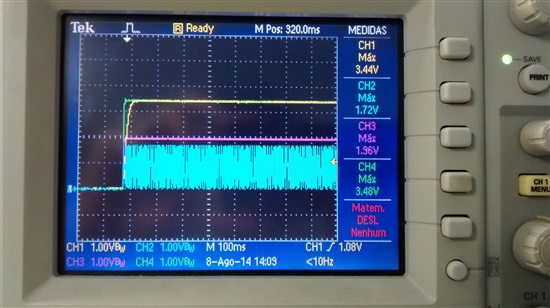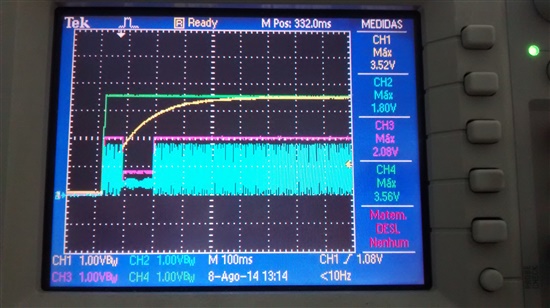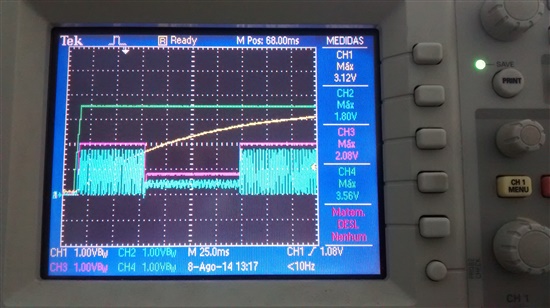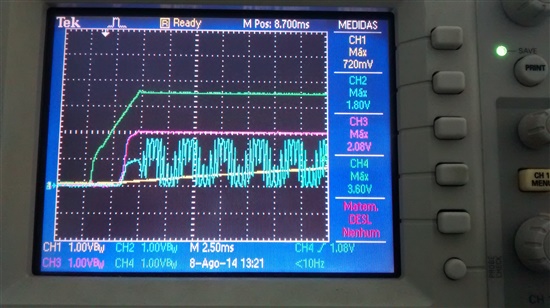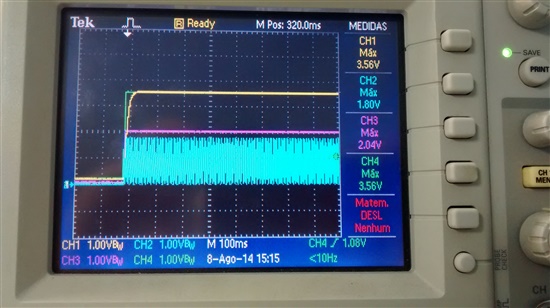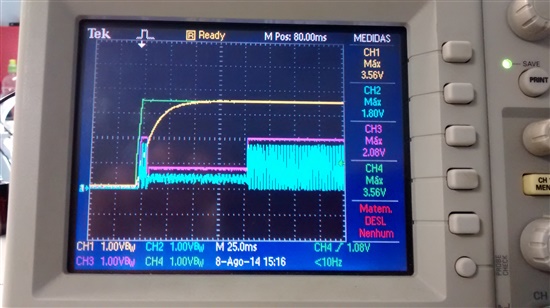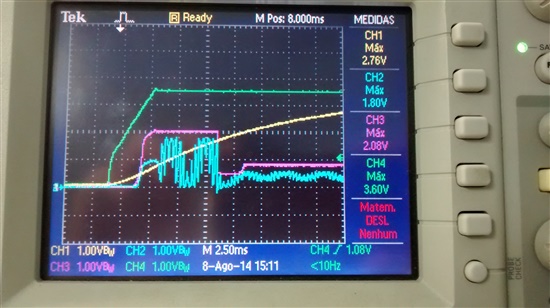Hello.
I have several circuit boards using TUSB3210 and sometimes I can't get the TUSB to be detected as an USB device after power up.
This happens almost at random, but mostly when I turn the board off and on again in less than 5 seconds (sometimes more).
I tried to debug this problem checking some signals like RESET, CLOCK, 1.8VDD and PUR with a scope and found a strange behavior in the cases where the TUSB is not detected.
The image below shows these signals on a regular power up, i.e., when the TUSB is detected normally.
Green is PUR (pin 17), blue is the CLOCK (pin 60). pink is 1.8VDD (pin 37) and yellow is RESET (pin 13):
And the next two images show cases where, after power up, the TUSB is not detected:
In these cases the PUR signal stays low and the TUSB cannot be detected.
I'm using an RC circuit on the RESET pin (R = 200k and C = 470nF, or R = 100k and C =1uF on some boards), the clock is provided by a 12MHz crystal (18pF capacitors) and the 1.8VDD is supplied through a resistive divider (R1 = R2 = 33k on a 3.3V source) a 22uF and a 470nF capacitor are placed on the 1.8VDD pin also.
Can you explain this behavior? What could be done to avoid this situation?
Best regards,
Eduardo Siridakis





